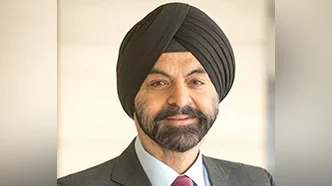Global gas flaring has reached its highest level since 2007, with approximately $63 billion in energy wasted and significant setbacks in emission management and energy security. In 2024, the practice of burning natural gas during oil extraction resulted in 151 billion cubic meters of gas being flared, an increase of 3 bcm from the previous year. This activity led to the emission of an estimated 389 million tonnes of CO₂ equivalent, including 46 million tonnes from unburnt methane.
Despite some countries reducing their flaring activities, nine major flaring nations continue to contribute three-quarters of all global flaring while producing less than half of the world's oil. According to satellite data analyzed by the World Bank's Global Gas Flaring Tracker, flaring intensity has remained consistently high over the past 15 years.
Demetrios Papathanasiou, World Bank Global Director for Energy and Extractives, expressed frustration at this wasteful practice: “When more than a billion people still don’t have access to reliable energy and numerous countries are seeking more sources of energy to meet higher demand, it’s very frustrating to see this natural resource wasted.”
The report notes that countries committed to the Zero Routine Flaring by 2030 (ZRF) initiative have achieved better results compared to those that have not joined. Since 2012, ZRF-endorsing countries reduced their flaring intensity by an average of 12%, whereas non-endorsing countries saw a 25% increase.
To address this issue, the World Bank’s Global Flaring and Methane Reduction (GFMR) Partnership is involved in supporting projects aimed at reducing methane emissions and gas flaring through grants, technical assistance, policy reform advisory services, capacity building, and institutional strengthening. For instance, GFMR allocated $11 million in Uzbekistan for identifying and fixing methane leaks in its gas transportation network.
Zubin Bamji, World Bank Manager for GFMR Partnership emphasized: “Governments and operators must make flaring reduction a priority... The solutions exist. With effective policies we can create favorable conditions that incentivize flaring reduction projects.”
The World Bank’s GFMR is supported by governments and organizations dedicated to ending routine gas flaring. The annual Global Gas Flaring Tracker monitors global progress towards achieving Zero Routine Flaring by 2030 using satellite data provided by NOAA.

